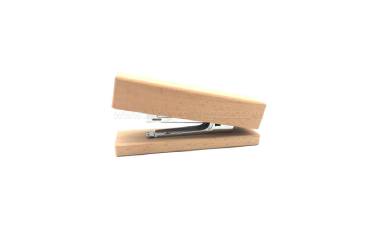Keywords: Creative Toys, Christmas Decoration, Printing, Packing, Seasonal Gift, ECO-friendly
- +86 574 8735 2935
- market@magicorangecn.com
Keywords: Creative Toys, Christmas Decoration, Printing, Packing, Seasonal Gift, ECO-friendly
A stapler is a tool often used in our daily life. Its function is to assemble
the documents or papers that need to be stapled together with nails through the
pressing of the stapler. Below we follow the Sunflower Earrings Supplier one
Let's take a look at the working principle and basic functions of the
stapler.
1. How the stapler works
The working principle of an ordinary Wooden Stapler is that when the end cap of the stapler is pressed hard by the hand, the top pin, needle, and clamp will rotate around the connecting pin. With the continuous application of manual force, the top pin will rotate to out of its natural state, At this time, the top piece will move up and down around the connecting pin, which is slightly larger than a needle height, the end cover spring is compressed, and the shrapnel is compressed, and then it will drive the needle to move down. After a certain distance, the needle will touch the need for binding. The object will pass through the object under the action of human power. After the needle passes through the object, it will hit the mold, and the needle will bend to realize the penetration binding between the needle and the object.
After finishing the binding, the person removes the force on the end cap of the needle. At this time, the shrapnel will rebound, and the needle, clamp, top and end cap will rise under the action of the elastic force, and then the end cap spring will rebound to make the top The pin and the end cover rise again, and the top pin separates from the clamp; the expansion of the push spring causes the needle to feed again, so that the stapler returns to the initial state, waiting for re-binding.

Wooden Stapler
2. Basic functions of the stapler
According to the importance of the function of the Wooden Book Sewer, the functions of the stapler are divided into main functions, secondary functions and auxiliary functions. It mainly includes the needle loading function and the needle stapling function. The secondary functions include the function of changing the needle binding shape. The auxiliary functions include the anti-skid and noise prevention functions. Each function can be divided into some sub-functions according to its implementation steps. Among them, the needle loading function can be divided into the open cover function, namely open-end cover function, needle loading function, fixed needle function, and closing function; the staple function can also be subdivided into book feeding function, semi-automatic needle feeding function, binding function, and automatic stitching function. Ejector function, automatic rebound function, and book binding function; the function of changing the needle binding shape can be divided into the function of ejecting the needle mold, changing the shape of the needle mold, returning the fixed needle mold function and positioning the needle mold function; anti-slip and noise prevention functions; Trademark display function.

Copyright © Ningbo Magic Orange Arts & Crafts Co., Ltd. All Rights Reserved | Sitemap Technical Support: 